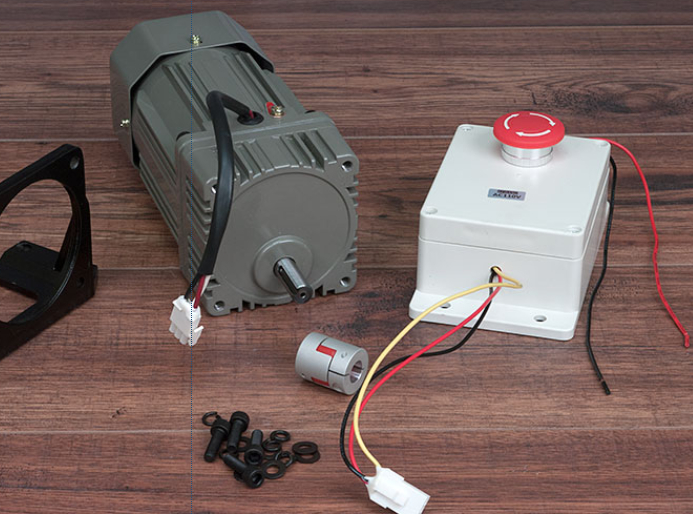OK guys, many, many thanks while I chew these thoughts.
Cbier, in your first paragraph, you caution to be careful, as I won't be having a transformer to isolate the AC current. Did you mean, personal safety, or the potential of frying the motor?
I have to say, the simplicity of using a controller appeals to me. Though I'd love to learn more about electronics, if I can get a couple components (e.g., 1/4 H.P. resistor, or recommended heat sink), wire up and mount and I'm good, that is really appealing. Costs, of course.
Which raises the next question. Those with open chassis, you mention to mount out of the way. Are these literally mounted as I see them, like a ....sorry, I'm sure this is wrong....circuit board, basically exposed? Or do they and any wiring go in some sort of junction or project box, then mounted? Facile question, I know....
Augie:
Seems speed control then, is not any complicating factor. I was just wondering if "flip the switch and run" milling was generally workable - if you load up your hopper, and hit a constant speed mill (which I think is what we did at G.I.? - or perhaps started it up then hit the malt hopper gate....forgotten), is that going to pose a problem if your motor's torque is a rated 90?
Finally, is this basically it? AC supply-power chord-dimmer-rectifier...motor?
I'm sure I've missed a million literal steps here...
Which is why I'm wondering if cbier, prudence and my own judgement leads me to think more carefully on buying a controller. You gave a lot of options, thank you. By the way, wondering if this would also work, provided I plug in the proper, 1/4HP resistor?
KB Electronics KBMD-240D (9370D) Multi-Drive Variable Speed DC Motor Control, NEMA-1
One of the answers also indicates the need for a fuse kit, know nothing about this.
Finally, I'd seen that Williams systems, Augie. It looked pretty cool and if I hadn't already bitten the bullet with this motor, I may have gone that way. Perhaps I should? - sell this motor back to ebay, and go with a more pre-fabbed setup?
At any rate, what looks like the only controller, with that red button - this looks astoundingly simple.





























![Craft A Brew - Safale BE-256 Yeast - Fermentis - Belgian Ale Dry Yeast - For Belgian & Strong Ales - Ingredients for Home Brewing - Beer Making Supplies - [3 Pack]](https://m.media-amazon.com/images/I/51bcKEwQmWL._SL500_.jpg)





























![IMG_0256[1].jpg IMG_0256[1].jpg](https://cdn.homebrewtalk.com/data/attach/360/360229-IMG-0256-1-.jpg)
![IMG_0257[1].jpg IMG_0257[1].jpg](https://cdn.homebrewtalk.com/data/attach/360/360230-IMG-0257-1-.jpg)
![IMG_0334[1].jpg IMG_0334[1].jpg](https://cdn.homebrewtalk.com/data/attach/360/360417-IMG-0334-1-.jpg)
![IMG_0336[1].jpg IMG_0336[1].jpg](https://cdn.homebrewtalk.com/data/attach/360/360418-IMG-0336-1-.jpg)
